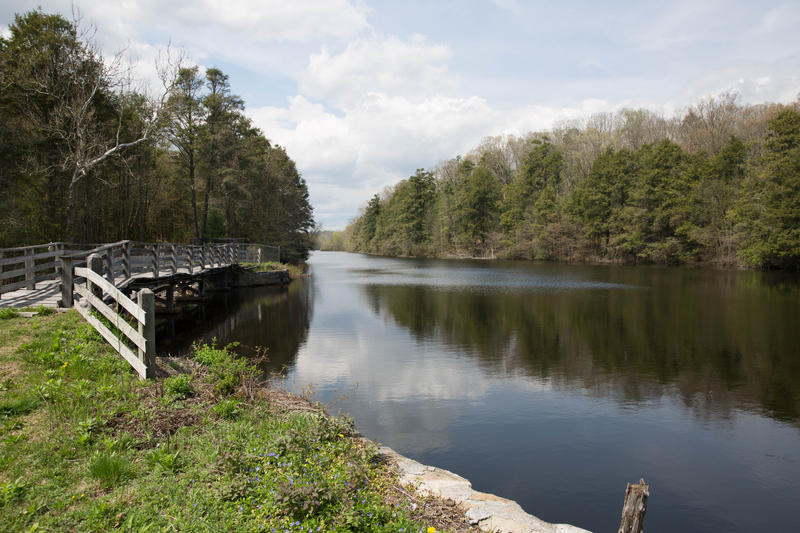Exploring Where Oceans And Rivers Intersect Along Connecticut’s Shoreline

This portion of the Menunketesuck River splits itself between Westbrook and Clinton. It’s only a few miles from Long Island Sound, and even closer to a nearby highway. But among the trees and water, all that noise feels so far away. Photo by Patrick Skahill for Connecticut Public Radio
In nature, fascinating biology can be found on the edges — intermingled habitats where biodiversity can flourish. Connecticut Public Radio recently traveled to one such edge, what’s called a “head of tide.”
I’m straddling a lumpy bridge arching over an old stone dam. Long Island Sound is only a few miles away and Interstate 95 is even closer. But here, wrapped in trees and the sounds of flowing water, it all feels so far away.
“Today we’re at the head of tide on the Menunketesuck River in Westbrook and Clinton,” said Steve Gephard, a supervising fisheries biologist with the state Department of Energy and Environmental Protection.
A head of tide is “where one ecosystem ends and gives it up to another ecosystem,” Gephard said.
At high tide, he says this area of the Menunketesuck, pronounced “muh nun kuh tee suck,” is brackish. That means there’s a mixture of fresh and salt water, which is important for migratory fish like eels, alewives, or blue-back herring.
